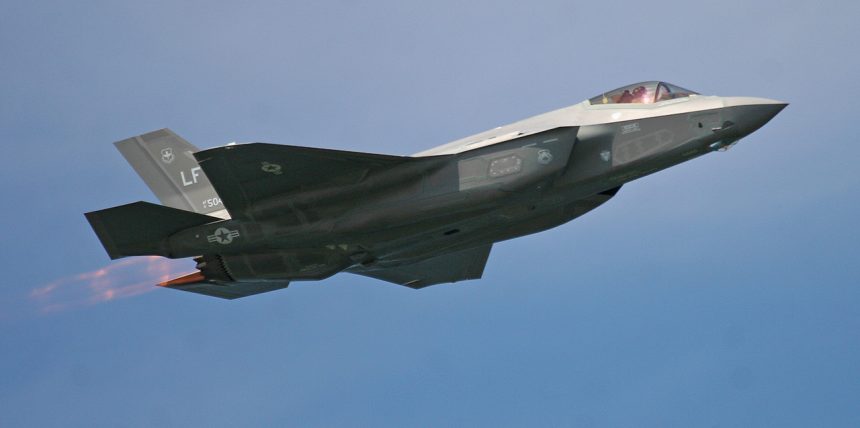Five Pilots Report Symptoms Similar to Hypoxia.
The U.S. Air Force has reported that flight operations for F-35A Lightning II aircraft at Luke AFB near Phoenix, Arizona in the United States have been temporarily halted.
USAF Brig. Gen Brook Leonard, commanding officer of the 56th Fighter Wing that operates the F-35A, said in a press release that, “In order to synchronize operations and maintenance efforts toward safe flying operations we have cancelled local F-35A flying.”
The announcement that appeared on the official Luke AFB website via the U.S. Air Force Office of Public Affairs stopped short of calling the temporary halt to flight operations a “grounding”.
It is possible Air Force officials are using caution in references to any halt in flight operations to avoid potential associations with a series of incidents on the F-22 Raptor from early 2012 with crew life support equipment, specifically the oxygen system. The incidents from 2012 led to a sensational expose’ on the U.S. investigative reporting show “60 Minutes” in which two Virginia Air National Guard pilots said the F-22 was unsafe to fly due to problems with its crew life support system. Additionally, in March of this year U.S. Navy officials told U.S. Congress there was an increase in “physiological episodes” in the long successful Boeing FA-18 Hornet.
The official Air Force news release reads, in part, “According to base officials, since May 2, 2017, five F-35A pilots assigned to Luke AFB have reported physiological incidents while flying. In each case, the aircraft’s backup oxygen system operated as designed and the pilot followed correct procedures, landing the aircraft safely.”
The Air Force statement went on to say, “Wing officials will educate U.S. and international pilots today on the situation and increase their awareness of hypoxia symptoms. Pilots will also be briefed on all the incidents that have occurred and the successful actions taken by pilots to safely recover their aircraft.”
Capt. Mark Graff, an official U.S. Air Force spokesman, said the temporary halt of F-35A flight operations was done, “not out of fear or out of danger, but out of an abundance of caution,” Capt. Graff also told news media that the Air Force plans to resume flight operations on Saturday.
The temporary halt of flight operations includes 55 of the U.S. Air Force F-35A’s at Luke AFB. The story is contrasted by a lengthy phase of successes for the F-35 program that include successful deliveries to international F-35 users like Japan and Israel, operational deployments of the U.S. Marine F-35B V/STOL version to Japan and major deployment of Air Force F-35As to Europe.








